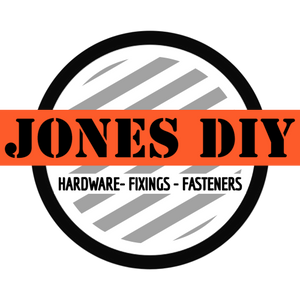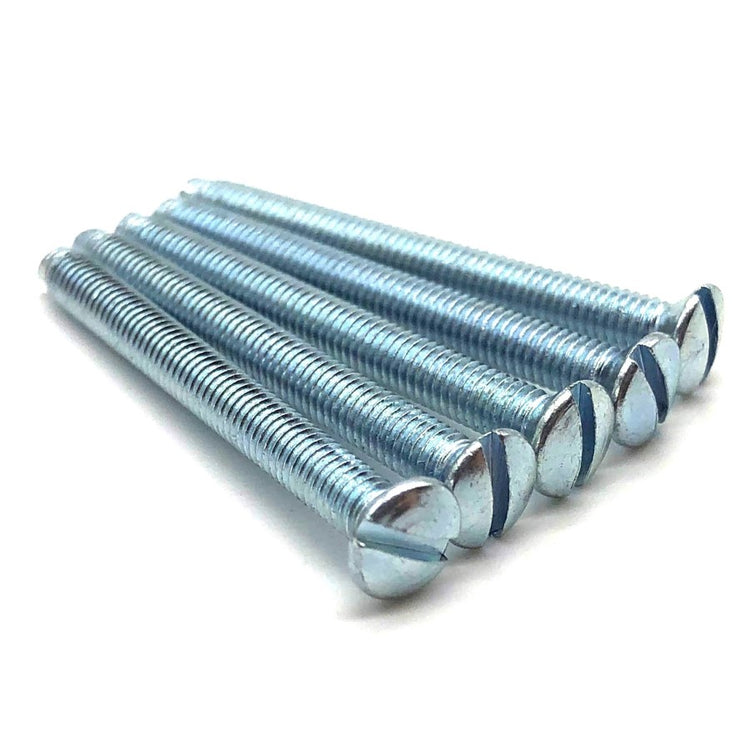Electrical socket screws ensure secure connections for outlets, switches, and other devices. Having a comprehensive understanding of their size, types, and applications is essential for Electricians and DIY enthusiasts alike.
In this detailed guide, we will explore the key aspects of electrical socket screws, including their sizes, various types, and everything else to enable you to be able to choose the right electrical screw for your application.
What Size are Electrical Socket Screws?
When it comes to Electrical Screws, the standard thread size is 3.5mm also referred to as M3.5. However, it's crucial to consider the length of the thread to ensure compatibility with different installation requirements.
Here are some commonly available thread lengths for electrical socket screws;
25mm: Perfect for thinner materials or shallow electrical boxes, the most common size that generally come included with most socket or switches purchased. Perfect for 20mm backboxes on a standard installation.
35mm: A versatile length suitable for most standard installations where you need that extra bit of length over the standard 25mm socket screw.
40mm: Ideal for projects that require additional reach or thickness. A good screw length for 25mm or 30mm back boxes.
50mm: Used for thicker materials or when extra depth is needed. A good length to use with 35mm backboxes. Bear in mind this screw length is too long for most shallower backboxes, unless the backbox is set deep into the wall.
75mm: Longer screws designed for specialized applications or deep installations. These screws are generally the longest length you can purchase and are perfect for getting you out of those tricky situations where a standard screw length just won't cut it.
100mm: Extra long socket screws aren't readily available in most main DIY stores but can be found at Jones DIY, these screws aren't frequently required but come in as life savers when needed, a few of these 100mm electrical screws are worth keeping in your consumables stock as they cover every eventuality and can be cut down to size if 100mm is a little too much.
Types of Electrical Socket Screws
M3.5 Electrical Screws are available in various materials and types. Let's explore a few of them here for you;
Screw Head
Electrical socket screws are all countersunk for the perfect fitment into all types of switches and sockets, this enables the screws to give a reliable and secure tight fit. They come in two different head styles, these are;
Raised Head: The most common electrical screw head, featuring a slightly raised top surface, these screws offer a subtle projection when a flush appearance is not necessary. These are used on most standard electrical outlets and come with a slotted head for driving.

Flat Head: These screws are used on specific outlets and have a flat top surface, making them suitable for when a flush finish is required, providing a smooth and aesthetically pleasing finish. These screws are generally used on more modern designs including flat plate switches and sockets, flat head electrical screws also come with a slotted head for driving.

Screw Material
Electrical socket screws can come in a range of different styles/materials. Here are a few we have at Jones DIY;
Silver: Silver-colored screws are the most commonly used in electrical installations. They are versatile, reliable, and provide a clean and professional look. Silver electrical screws generally come provided with white and silver electrical outlets.

Black Nickel: These screws feature a black nickel finish, adding an elegant and contemporary touch to your electrical projects, the perfect complement to your darker shaded electrical outlets.

Brass/Gold: With their corrosion-resistant properties, brass or brass-plated screws are a popular choice for outdoor or high-humidity environments. They combine functionality with durability. They also finish off excellently your modern gold plated electrical outlets.

These are some of the more common types of screw materials, other specialist types are less commonly available such as antique brass etc.
How to Install Electrical Screws
- Ensure electrical power has been SWITCHED OFF
- Ensure the electrical outlet is clean and free from debris.
- Ensure all electrical connections are tight and secure with no loose copper strands that could come in contact with the backbox, outlet or each other
- Align the socket and ensure it pushes back flush into the backbox with little resistance. If you feel resistance here then you may need to adjust and tidy up your cables within. Ensure you can see the screw thread inserts through the screw entry holes on the outlet.
- Using the advice above to ensure you have selected the correct screw size and type, insert the electrical screw through the entry hole and into the threaded insert. At this point it is good practice to twist the screw in the opposite direction of tightening, at some point within a full rotation of the screw, you should feel the screw 'drop' into the threads, you now know the screw has found the threads correctly, you can now tighten the screw using a flat bladed screwdriver, ensuring to maintain a horizontal level. This will stop the screw from potentially cross-threading. If you feel too much resistance at any point in threading other than the outlet tightening up, then you need to STOP, untighten the screw and redo the steps above.
- As you approach the full tightening of the outlet, it is good practice to use a spirit level and place it on the top edge of the outlet. You can now adjust the outlet and tighten to ensure a level finish.
- Once tightened, ensure the outlet has no movement and is securely held in place.
- Electrical outlets are generally maintenance free but you can periodically check the screws for tightness or signs of rust and tighten or replace as necessary. This eliminates the possibility of screws loosening and potential outlet movement in the future. This will drastically reduce any likelihood of electrical faults due to loose connections in the future.Conclusion ...
Electrical Socket Screws aren't a complex screw type but it is good to have an awareness of the various types and materials available to ensure you select the appropriate screw for your application. This is essential for the safety of your installation whether doing this as an avid DIY'er in your own home or as an Electrical Professional installing a new circuit for your customers, Safety is Essential.
The main outcome of an installation is the secure fixing of your outlet which is mainly down to the electrical installation and the length of socket screw. It is important to also have an aesthetically pleasing finish !!
I hope this has been helpful for you. If you do have any questions regarding electrical screws please leave a comment and we will get back to you.
Please take a look at our collection of socket screws, we have various lengths and types available, all in stock. Postage from as little as £1.79 or Free on orders over £50.

